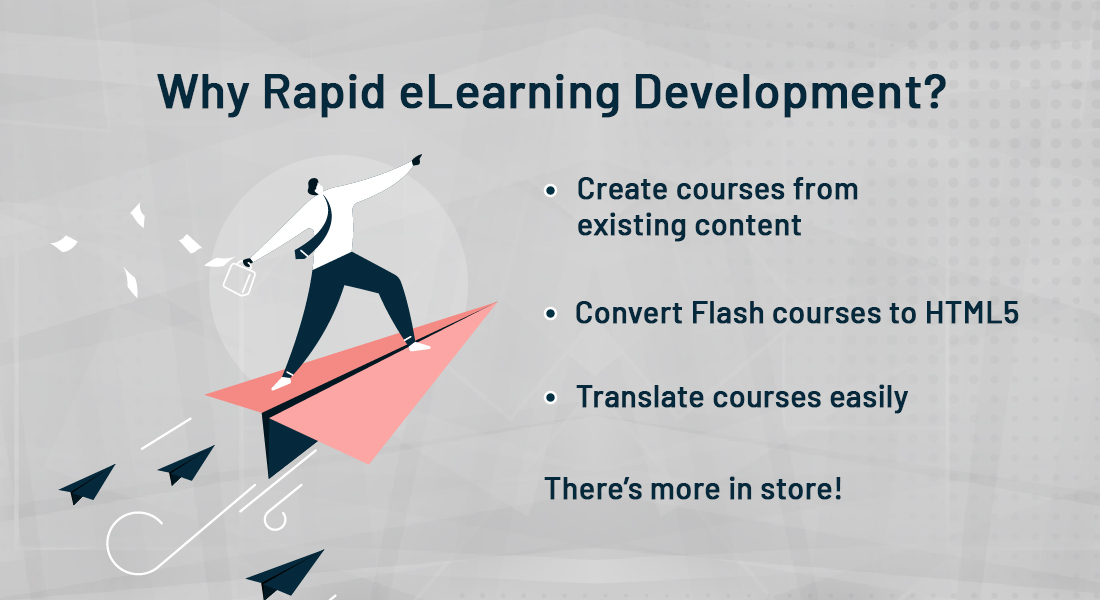Adopting Accessible E-Learning for Reasons Beyond Compliance
What are the reasons, apart from compliance to provide accessible e-learning to your employees? Check this blog to find the reasons that include creating an inclusive workplace.

With online learning gaining predominance in organizations, e-learning courses have become popular for training employees. But the point is, for e-learning to bring the desired results, it has to be accessible to every employee and this is mandatory by law in most countries. This means making e-learning courses accessible to employees with disabilities too. As a training manager, why should you think of providing accessible e-learning? Check this blog to know the reasons for adopting accessible e-learning for motives beyond compliance.
Reaching a broader audience
When e-learning is designed with accessibility parameters in mind, it shows management is sensitive to the needs of the disabled. When you provide options in the course to enlarge type, improve the contrast, or use captioning for the videos, you are not only catering to the needs of your disabled employees but also taking a step toward improving the learning experience for all your learners.
The point is when you make efforts to make your e-learning accessible to those with disabilities, others too can benefit. Adding accessibility features brings benefits to all learners and on the design and development aspect, it helps in standardization and encourages adherence to guidelines for good design and usability.
Focusing on usability helps to resolve issues that may be minor for some users but can make a major difference to those with disabilities. This will make e-learning easy, convenient, and less frustrating. This in turn will lead to better engagement in the training and the inclination to complete it. As Steve Ballmer, the former CEO of Microsoft said, “Accessible design is good design – it benefits people who don’t have disabilities as well as people who do. Accessibility is all about removing barriers and providing the benefits of technology to everyone.”
Meeting the requirements of law
Providing accessible learning is also a legal condition and organizations implement it as a compliance requirement. Since e-learning depends on access to the web, laws pertaining to web accessibility assume significance. The web should promote equal access to information and education including those with disabilities and laws such as Section 508 and WCAG 2.0 have been enacted to ensure this.
While Section 508 is exclusive to the United States, WCAG standards are followed in many countries. They vary in the requirements for compliance, while some countries require WCAG for government websites; others insist that all websites comply.
Recently WCAG standards have become stringent with emphasis on making the content perceivable, operable, understandable, and robust which is represented with the acronym POUR. These laws are shifting the focus from efforts toward checking the box for accessibility to providing an accessible, usable, functional, and relevant learning experience to those with disabilities.
Catering to diverse abilities
When creating accessible e-learning, you are creating a sense of inclusiveness in your workforce. Accessibility ensures that employees with disabilities are not left out and have equal access to training and development opportunities.
When learning is designed for people with disabilities, it usually works with tools they already use, such as keyboards and screen readers. For this, typography, color schemes, and the screen design are tested and adjusted to be conducive for them so that they can receive, navigate, and comprehend the course.
This is significant for attracting, retaining and up skilling talented employees in the organization, a motive training managers are clued in to and are willing to focus their efforts on. Apart from this, it sends out an important message to the workforce, that you care about their development and are making efforts to create an inclusive workplace.
There might be the argument that there is no need to develop accessible content because your workforce does not require it. On the flip side, when you develop accessible e-learning you are opening the doors to better qualified employees who may be disabled but you are well- equipped to train them.
E-learning development standards are evolving with the development in graphics, multimedia, and programming, and this in turn creates an enormous challenge for accessibility. But learning professionals can help their organizations meet this challenge, sending the message that they care about providing opportunities for the learning and growth for every employee, irrespective of their abilities to create an equal and inclusive workplace.





